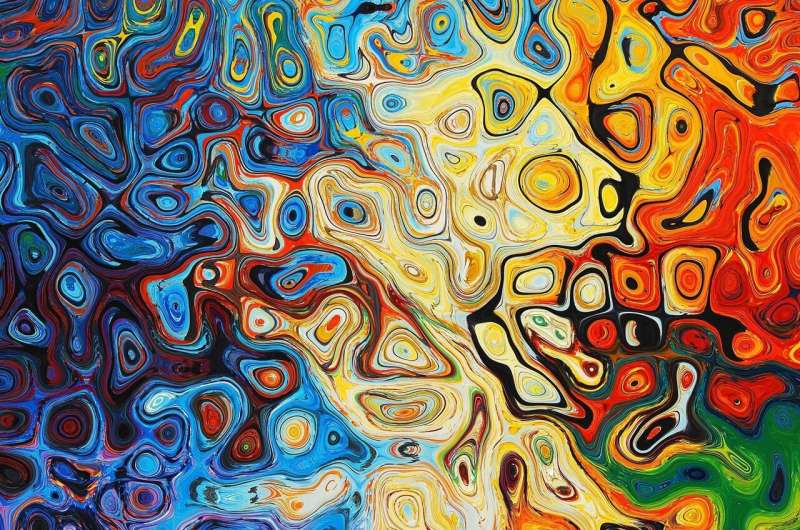Color complexity in social media posts leads to more engagement, new research shows

If you work in digital marketing, you don't need to be told a picture's worth a thousand words. of content marketers say images are crucial for achieving their social media goals, and a staggering 70% of users prefer image-based posts over text, surveys have found.
But which types of visuals work best? While anecdotal evidence abounds, systematic research on this topic is scarce.
As a who knows the issues social media managers face while picking images for their posts—and who collected thousands of Facebook posts from two organizations in different industries—I saw an opportunity.
Pigments and pixels
Together with my colleagues and , I looked at what researchers call "color complexity."
Color complexity is similar to colorfulness, but it's not quite the same: It's measured as color variation across pixels in an image, and our brains process it subliminally. The more the brain has to decipher color variations across neighboring pixels, the harder it has to work.
Fortunately, advanced computer vision technology makes it easier than ever to measure color complexity, and biometric eye-tracking makes it possible to see what images grab people's attention in real time.
We conducted four studies, looking at both real-world Facebook posts from two firms and experimental data using biometric eye-tracking. On the whole, we found that more complex images in social media posts tended to capture greater attention.
However, there were some caveats.
For instance, posts made later in the day and those with images that took up more screen space tended to benefit more from color complexity. This suggests that the timing and visual prominence of posts play a role in maximizing engagement.
In addition, when images were paired with negative, feel-bad text, color complexity made less of a difference.
We also found that pairing images with complex texts can actually strengthen the link between color complexity and user engagement. This surprising finding suggests that more intricate language might encourage people to pay more attention to the images.
The complexities of color
, and its influence on everything from brand perception to purchase intentions, has long been well documented. Much less is known, however, about the role of color complexity in social media engagement. Our research is beginning to fill that gap.
Overall, our findings underscore the importance of strategic image design in social media marketing. They suggest that a nuanced approach to image design, incorporating high color complexity where appropriate, can significantly enhance user engagement.
For marketers and content creators, the implications are clear: Investing in the careful curation of social media images, especially those with high color complexity, can lead to better user engagement. Just be mindful of the timing and context, too.
Provided by The Conversation
This article is republished from under a Creative Commons license. Read the .![]()



















